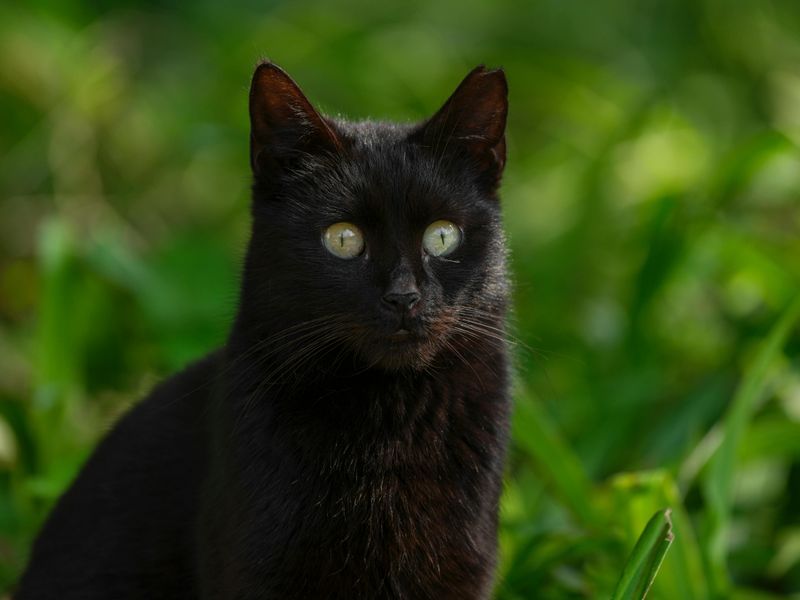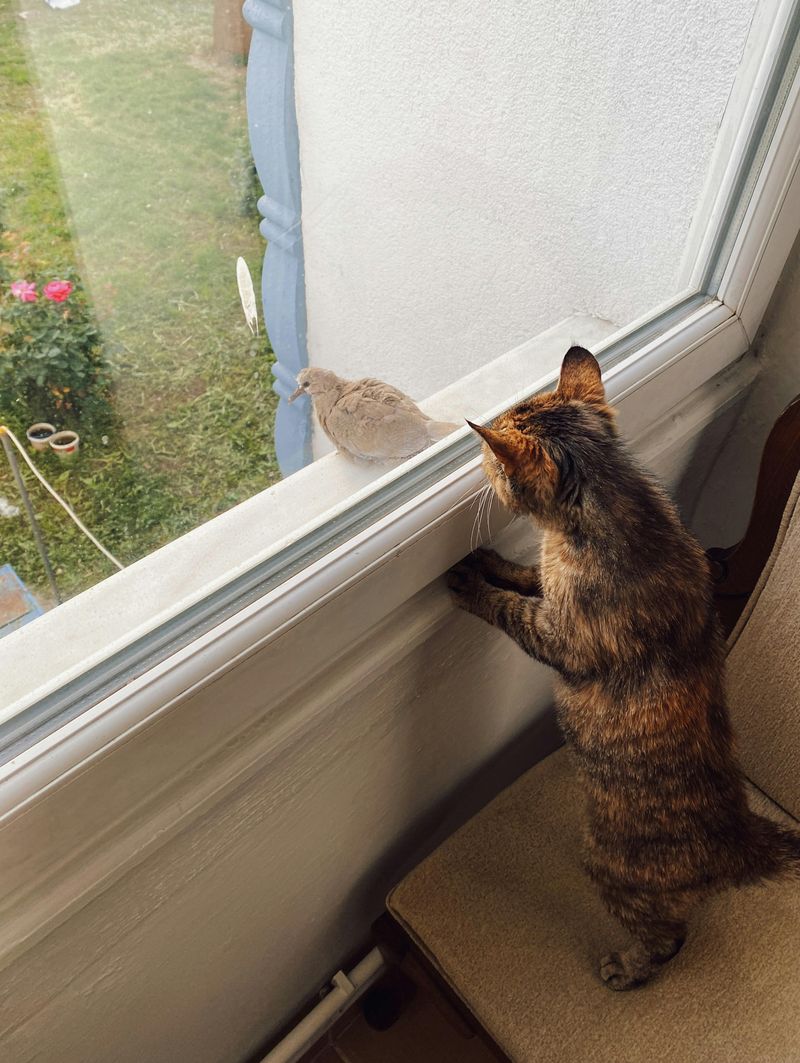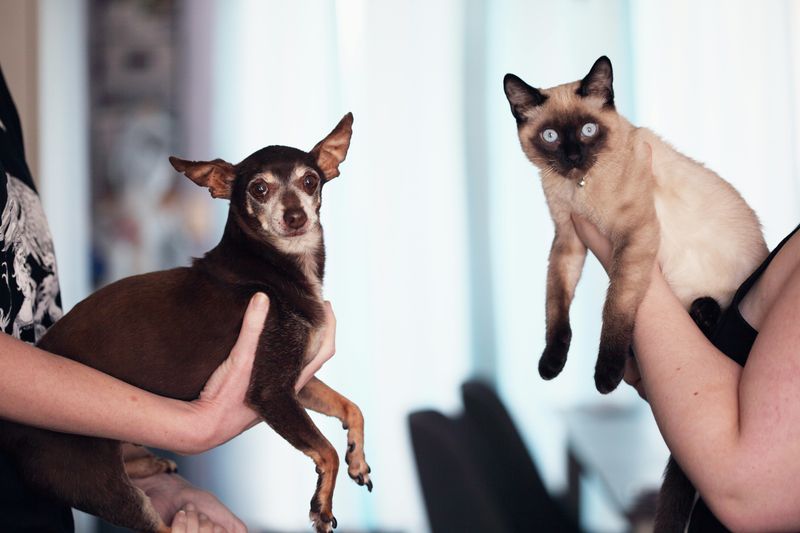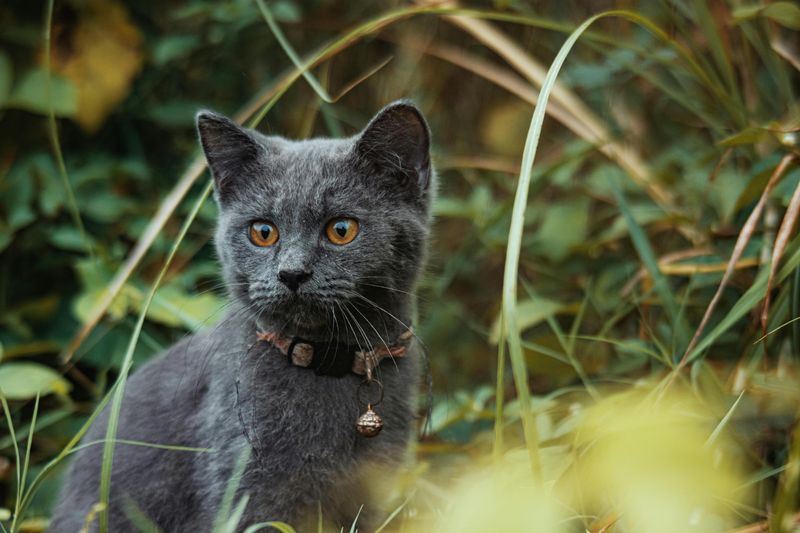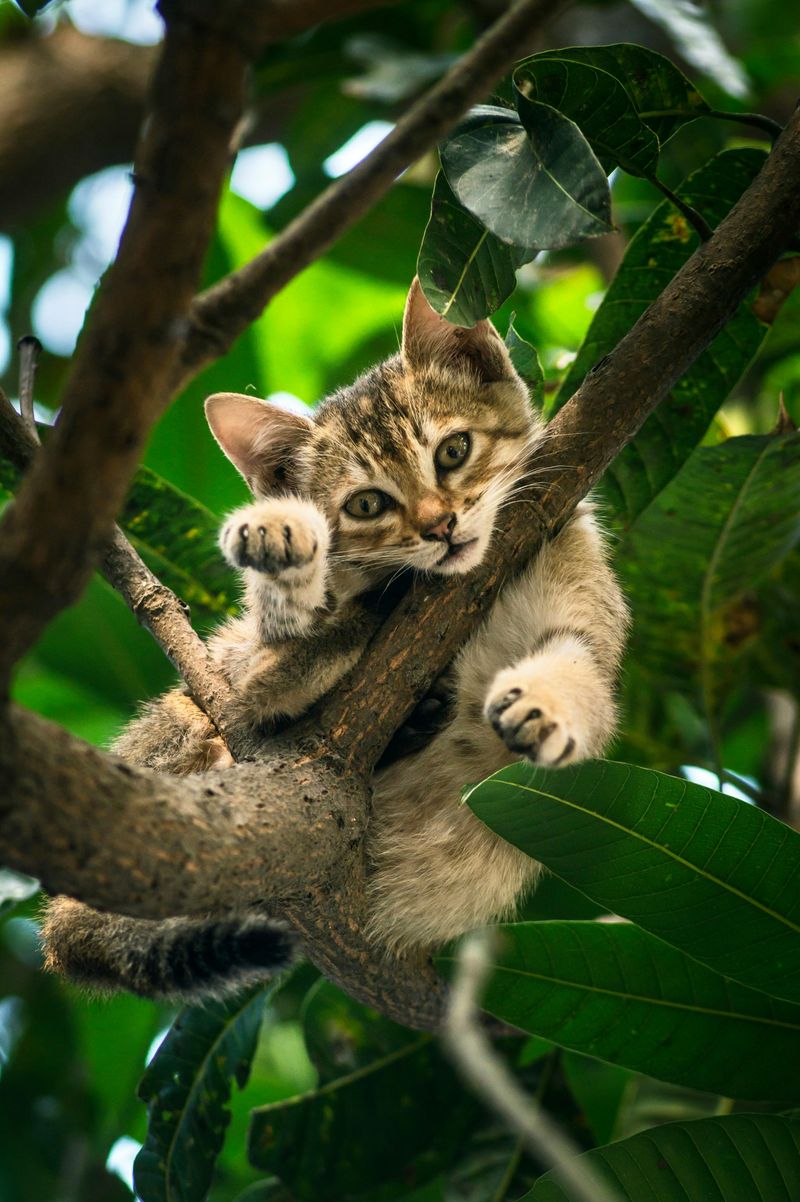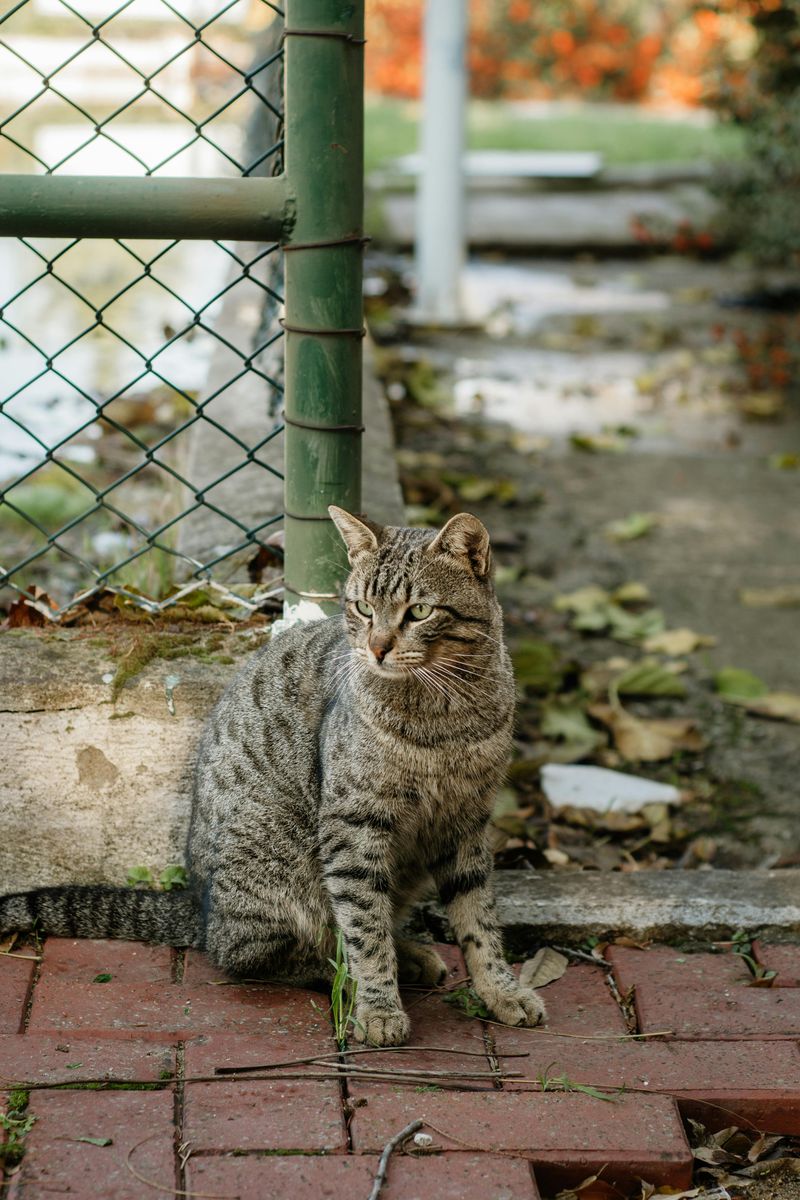📖 Table of Content:
- 1. Cats Have Their Own Animal Translator
- 2. Bird Watching Is Actually Language Learning
- 3. Dogs and Cats Can Learn Each Other’s Languages
- 4. Your Cat Understands Human Baby Cries
- 5. Purrs Communicate Across Species Boundaries
- 6. Predator Calls Trigger Universal Fear Responses
- 7. Cats Develop Regional Animal Dialects
Have you ever caught your cat chirping at birds or making strange noises when watching other animals?
Cats are fascinating communicators with abilities that might surprise even the most devoted pet parents. While they can’t exactly chat with squirrels or have heart-to-hearts with dogs, research suggests cats understand more about animal communication than we previously thought.
Let’s explore what science tells us about your feline friend’s cross-species communication skills.
1. Cats Have Their Own Animal Translator
Your cat’s brain is wired to decode animal sounds, especially those that might signal danger or opportunity. Studies at the University of Tokyo revealed that cats process and categorize different animal vocalizations using specialized brain regions.
Unlike humans who primarily use language centers, cats utilize instinctual brain pathways that evolved specifically for survival. This natural ability helps them distinguish between threatening predator sounds and harmless background noise.
What’s truly remarkable is that domestic cats retain these wild interpretation skills despite thousands of years of domestication. Your pampered house cat still carries the ancient neural hardware of its ancestors, allowing it to understand fundamental aspects of other species’ communication.
2. Bird Watching Is Actually Language Learning
That chattering sound your cat makes while watching birds through the window isn’t just excitement—it’s a form of mimicry! Researchers discovered cats often attempt to replicate bird calls, suggesting they’re trying to communicate or lure potential prey.
This behavior, called chattering, involves rapid jaw movements combined with distinctive sounds that sometimes resemble the birds they’re observing. Some experts believe this represents a frustrated hunting response.
More fascinating still, each cat develops its own unique “bird vocabulary” based on local species they regularly observe. Your indoor cat essentially creates a personalized dictionary of bird sounds they find most interesting or relevant to their hunting instincts.
3. Dogs and Cats Can Learn Each Other’s Languages
Contrary to the “fighting like cats and dogs” stereotype, these animals can develop impressive communication systems when living together. Multi-pet households witness the emergence of shared signals and sounds that transcend species barriers.
Cats living with dogs often adopt more vocal communication styles, while dogs learn to interpret subtle feline body language. A study from the University of Lincoln found that after just six months of cohabitation, 65% of cats and dogs developed at least five mutual communication signals.
Your cat might use a special meow exclusively for the family dog or recognize specific barks that signal playtime versus warning. This adaptive communication shows remarkable cognitive flexibility in both species.
4. Your Cat Understands Human Baby Cries
Here’s something truly surprising: cats react specifically to the sound of human infant cries. Research published in Animal Cognition revealed that cats show increased alertness and often approach the source of baby cries, suggesting they recognize distress signals across species.
The frequency range of baby cries overlaps with distress calls made by many mammal infants, including kittens. Your cat’s maternal or protective instincts activate in response to these universal sounds of vulnerability.
Some cats even attempt comfort behaviors like purring or gentle head-butting when hearing recordings of crying babies. This cross-species empathy demonstrates that cats possess a fundamental understanding of emotional communication that transcends language barriers.
5. Purrs Communicate Across Species Boundaries
Your cat’s purr operates at a frequency range between 25-150 Hz—a range that has measurable calming effects on humans and other animals. Scientists at the University of Sussex discovered this frequency range triggers nurturing responses in many mammals.
The healing properties of purring aren’t just beneficial to cats. When your cat purrs near an injured animal companion (or even you when you’re sick), they might actually be offering a form of sound therapy that promotes tissue healing and reduces stress.
Most remarkably, multiple animal species respond positively to cat purrs, suggesting this sound serves as a universal peace signal in the animal kingdom. Your purring cat essentially broadcasts “I’m friendly” in a language that crosses species barriers.
6. Predator Calls Trigger Universal Fear Responses
Play a recording of an owl hoot or coyote howl, and watch your indoor cat’s reaction. Even cats with no outdoor experience show instinctive recognition of predator vocalizations, suggesting this knowledge is hardwired rather than learned.
A groundbreaking study at the University of California found that cats respond to predator sounds with the same physiological stress markers (elevated heart rate, pupil dilation) regardless of their upbringing. This innate understanding helps explain why your cat might suddenly bolt from a room when hearing certain sounds on TV.
Interestingly, cats also recognize when you’re mimicking these predator sounds, showing they can distinguish between genuine threats and playful imitations. Their ability to contextualize these sounds demonstrates sophisticated auditory processing.
7. Cats Develop Regional Animal Dialects
Just like humans have accents, cats develop regional “dialects” in their communication with other animals. A cat from a rural environment communicates differently with wildlife than an urban cat does, adapting their signals to local animal populations.
Researchers at Cornell University documented how cats living near squirrels develop specific vocalizations used only when watching these animals—sounds that differ from those used for birds or rodents. Your cat essentially creates a custom dictionary for each type of animal they regularly encounter.
Most fascinating of all, cats adopt these regional communication styles from observing other cats. Kittens learn the specific “animal dialects” of their mothers, creating cultural transmission of communication patterns across generations of feline families.

